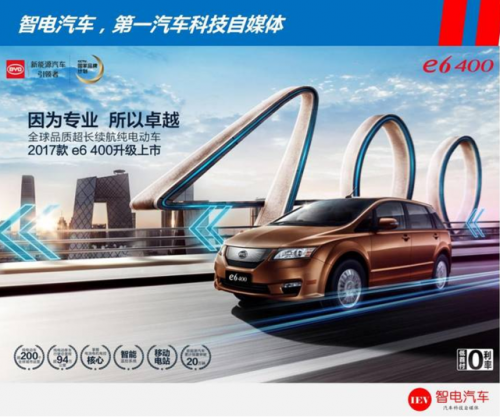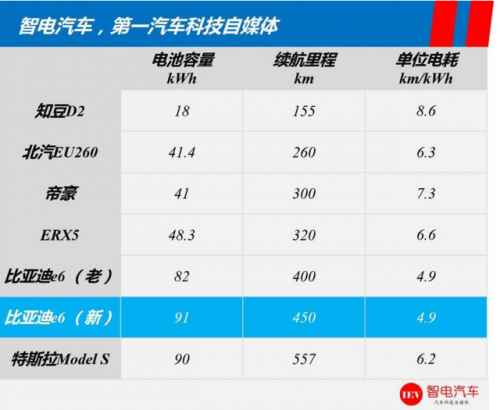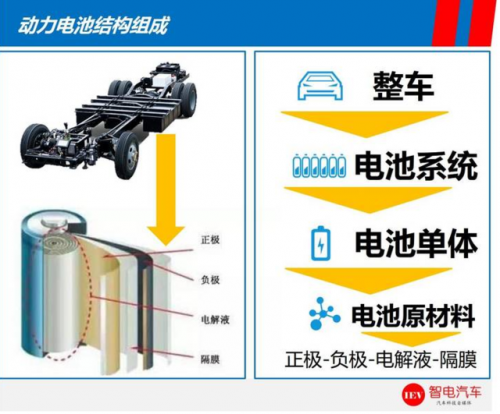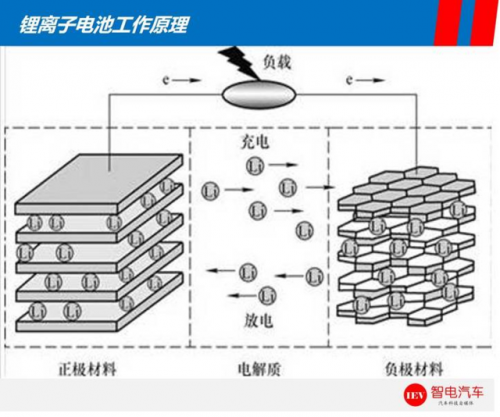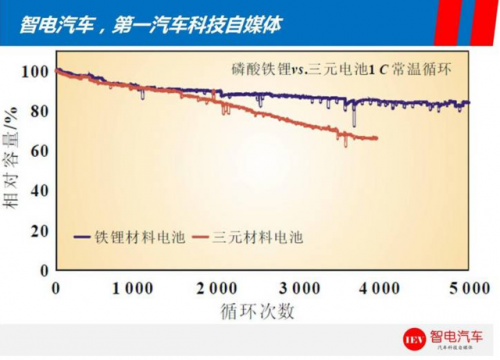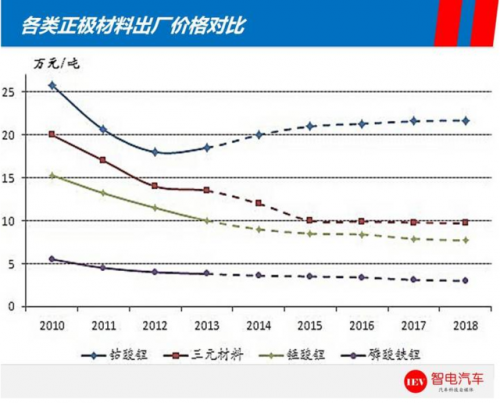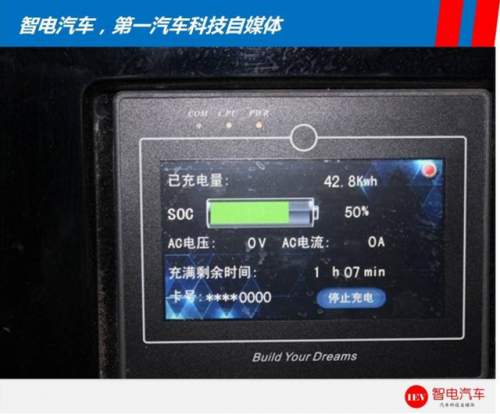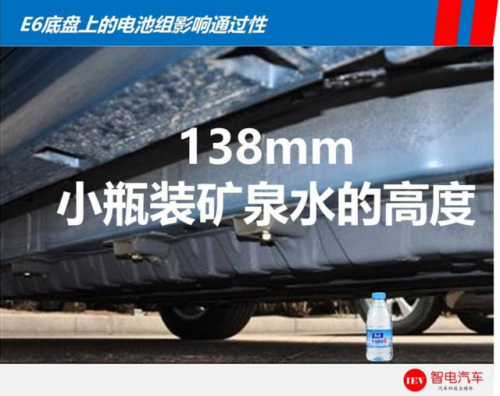Today, Zhidian Automobile takes a closer look at the core technologies behind the new BYD e6 to uncover what makes this electric vehicle stand out. With a claimed range of up to 450km, how does it compare to competitors like the Tesla Model 3? Let’s dive into the details. The first thing to note is that the e6 battery pack successfully balances both safety and performance. In terms of performance, the new e6 continues to use lithium iron phosphate (LFP) battery technology, which has been a long-standing choice for BYD. The battery capacity has increased from 82kWh to 91kWh, significantly boosting the vehicle's pure electric range to 450km. For most users, this is a major improvement, eliminating the anxiety of running out of charge after just a day or two of use. However, when looking at energy efficiency per kWh, the e6 doesn’t quite match up with its rivals. Its average driving range per kWh is lower compared to other models like the D2, Emgrand, Beiqi EU260, and even Tesla. This is mainly due to the fact that BYD uses LFP batteries, while many competitors have switched to ternary lithium-ion batteries, which offer higher energy density. To understand why LFP batteries have lower energy density, we need to look at their internal structure. A battery cell consists of a positive electrode, negative electrode, electrolyte, and separator. During discharge, lithium ions move from the negative to the positive electrode through the electrolyte, while electrons flow through an external circuit. The separator prevents short circuits between the electrodes. The amount of energy a battery can store depends largely on the materials used in the positive and negative electrodes. While graphite is commonly used as the anode material with a high specific capacity, the cathode materials—such as lithium iron phosphate, lithium cobaltate, or nickel-cobalt-manganese (ternary)—typically have lower capacities. As a result, the energy density of LFP batteries is generally lower than that of ternary lithium batteries. So why does BYD still choose LFP batteries? Despite their lower energy density, they offer significant advantages in terms of safety, lifespan, and cost. Lithium iron phosphate batteries are more thermally stable, meaning they are less likely to catch fire or release oxygen under high temperatures. They also have a longer cycle life, typically lasting between 3,500 to 5,500 cycles, compared to around 2,500 for ternary batteries. Additionally, LFP batteries are cheaper to produce, making them a more cost-effective option for mass production. Given these factors, BYD made a strategic decision to use LFP batteries in the e6, prioritizing safety and affordability over maximum range. This choice reflects a balanced approach rather than a complete compromise on performance. Another notable feature of the e6 is its intelligent battery temperature control system. Since lithium batteries are sensitive to temperature, extreme cold or heat can affect performance. To address this, the e6 is equipped with a thermal management system that keeps the battery at an optimal operating temperature, ensuring consistent performance in all weather conditions. This is a thoughtful design that enhances user experience and reliability. While the e6 offers impressive range and practical features, there are a few things to consider. First, the charging time is relatively long. Using a 380V three-phase AC power source with 40kW output, it takes about 2 hours to fully charge. If using a standard 220V household outlet, it could take up to 8–10 hours. This may be inconvenient for some users. Second, the battery pack is mounted on the chassis, which increases the ground clearance only to 138mm—roughly the height of a small bottle of water. This means the vehicle is not ideal for off-road driving or rough terrain, as hitting bumps could potentially damage the expensive battery pack, which costs around 100,000 yuan alone. Shenzhen Ousida Technology Co., Ltd , https://en.osdvape.com